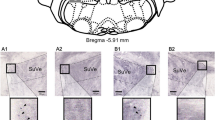Abstract
The percentage of severe migraine attacks in 56 volunteer subjects from November 1969 – May 1970 in Aberdeen was significantly increased during days when there were more than two hours of sunshine (p <0.05) and also when this gave rise to dazzle when in combination with snow cover. Atmospheric cooling was reported as a causative or aggravating factor in seven subjects and in 1.2% of recorded attacks. A low atmospheric pressure recorded at mid-day tended to be associated with significantly less frequent attacks (p < 0.05). There was a trend towards increase in frequency of attacks when the atmospheric pressure was rising. Low relative humidity was associated with a significant increase in the percentage of severe attacks (p <0.05). Saturday was associated with significantly more attacks than other days of the week (p< 0.01). Possible preventative measures are discussed.
Zusammenfassung
Bei 56 freiwilligen Personen, die vom November 1969 bis Mai 1970 in Aberdeen über ihr Befinden befragt wurden, war der Prozentsatz schwerer Migräneanfälle an Tagen mit mehr als 2 Stunden Sonnenschein und Blenden durch Schneebedeckung signifikant (p <0.05) erhöht. Erhöhte Abkühlung war bei 7 Personen ein ursächlicher oder verschlimmernder Faktor und bei 1,2% der berichteten Anfälle. Niedriger Luftdruck zur Mittagszeit war mit signifikant weniger Anfällen verbunden (p< 0.05). Eine Tendenz vermehrter Anfallfrequenz war typisch, wenn der Luftdruck anstieg. Niedrige relative Feuchte war verbunden mit signifikant erhöhter Häufigkeit schwerer Anfälle (p < 0.05). An Samstagen waren signifikant mehr Anfälle als an jedem anderen Wochentag. Präventivmassnahmen werden besprochen.
Resume
Entre novembre 1969 et mai 1970, 56 volontaires d'Aberdeen ont noté leur état physique et plus spécialement les céphalées qu'ils enduraient. Le pourcentage des maux de tête a été, de façon significative (p < 0.05), accentué durant les journées où l'on mesurait plus de 2 heures de soleil ou qui prêtaient à de l'éblouissement, vu qu'il se combinait à une couverture de neige. Chez ces personnes, un refroidissement de l'atmosphère fut noté comme étant la cause d'une aggravation des migraines. Ce même fait a été désigné comme étant la cause directe dans 1,2% des cas mentionnés. Une basse pression atmosphérique relevée à midi est souvent associée à des attaques de migraines moins fréquentes, et ceci de façon significative (p <0.05). On a en outre remarqué une tendance à l'accroissement de la fréquence des attaques quand la pression atmosphérique était en hausse. Une humidité relative spécialement basse a été mise en rapport avec un accroissement significatif du pourcentage de fortes attaques de migraines (p <0.05). On a noté, le samedi, plus d'attaques qu'un autre jour de la semaine et cela de façon significative (p <0.01). On discute enfin les possibilités de mesures préventives.
Similar content being viewed by others
References
AD HOC COMMITTEE ON CLASSIFICATION OF HEADACHE (1962): J.Amer.med.Ass., 179: 717–718.
BARRIE, M.A., FOX, W.R., WEATHERALL, M. and WILKINSON, M.I.P. (1968): Analysis of symptoms of patients with headaches and their response to treatment with ergot derivatives. Quart.J.Med., 37, 146: 319–336.
CARLSSON, A. and WALDECK, B. (1965): Rapid release of 3 H-metaraminol induced by combined treatment with protiptyline and reserpine. J.Pharm. Pharmacol., 17: 327–328.
CERNIBORI, A. and ROVETTA, P. (1969): Studio della risposta H di Golla e Winter nei soggetti normali. Rass.Neur. Veg., 23: 129–138.
CRANSTON, W.I., HELLON, R.F., LUFF, R.H. and RAWLINS, M.D. (1971): Noradrenergic mechanism in the central control of body temperature. Int.J.Biometeor., 15: 301–304.
EICHMEIER, J.A. (1969): Measurements of the concentration of atmospheric ions and nuclei in closed rooms. Biometeorology 4, S.W.Tromp and W.H.Weihe (ed.), Swets and Zeitlinger, Amsterdam, Part II, 136–137.
GLOWINSKY, J., AXELROD, J. and IVERSON, L.L. (1966): Regional studies of catecholamines in the rat brain in vivo. J.Pharm.exp.Ther., 153: 30–41.
GOLLA, F.L. and WINTER, A.L. (1959): Analysis of cerebral responses to flicker in patients complaining of episodic headache. Electroenceph. clin. Neurophysiol., 11: 539–549.
GRIST, N.R. (1972): Dazzle patterns. Lancet. 2: 133.
LANCE, J.W. (1969): The mechanism and management of headache. Butterworth & Co., London.
MAÇZYŃSKI, S., TYCZKA, S., MARECKI, B. and GÓRA, T. (1971): Effect of the presence of man on the air ion density in an office room. Int.J.Biometeor., 15: 11–21.
PEARCE, J. (1971): General review of some aetiological factors in migraine. In: Background to Migraine. J.N. Cummings (ed.)., Heinemann Ltd., London, 1–7.
RAWNSLEY, K. and LOUDON, J.B. (1964): Epidemiology of mental disorder in a closed community. Brit.J.Psychiat., 110: 830–839.
SACKS, O.W. (1970): Migraine Evolution of a Common Disorder. Faber and Faber, London.
SELBY, G. and LANCE, J.W. (1960): Observations on 500 cases of migraine and allied vascular headache. J.Neurol.Neurosurg.Psychiat., 23: 23–32.
SMITH, I., KELLOW, A.H. and HANINGTON, E. (1970): A clinical and biochemical correlation between tyramine and headache. Headache, 10: 43–52.
SULMAN, F.G., DANON, A., PFEIFER, Y., SUPERSTINE, E. and WELLER, C.P. (1971): The exhaustion syndrome in climatic heat stress and its treatment. Int.J.Biometeor., 15: 93.
TROMP, S.W. (1967): Biometeorology. In: The Encyclopedia of Atmospheric Sciences and Astrogeology. R.W.Fairbridge (ed.), Reinhold, New York, 114–122.
TROMP, S.W. (1968): Influence of weather and climate on asthma and bronchitis. Rev. Allergy, 22: 1027–1044.
WATERS, W.E. and O'CONNOR, P.J. (1971): Epidemiology of headache and migraine in women. J.Neurol., Neurosurg. Psychiat., 34: 148–153.
WEISSMAN, L. (1971): Experimental design in headache treatment. Headache, 10: 166–171.
WILSON, E.A. (1972): Diary of the ‘Terra Nova’ Expedition to the Antarctic 1910–1912. H.G.R.King (ed.), Blandford Press, London, 129 and 134.
WOLFF, H.G. (1963): Headache and Other Head Pain. Oxford University Press, London, New York.
Author information
Authors and Affiliations
Rights and permissions
About this article
Cite this article
Gomersall, J.D., Stuart, A. Variations in migraine attacks with changes in weather conditions. Int J Biometeorol 17, 285–299 (1973). https://doi.org/10.1007/BF01804622
Received:
Issue Date:
DOI: https://doi.org/10.1007/BF01804622




